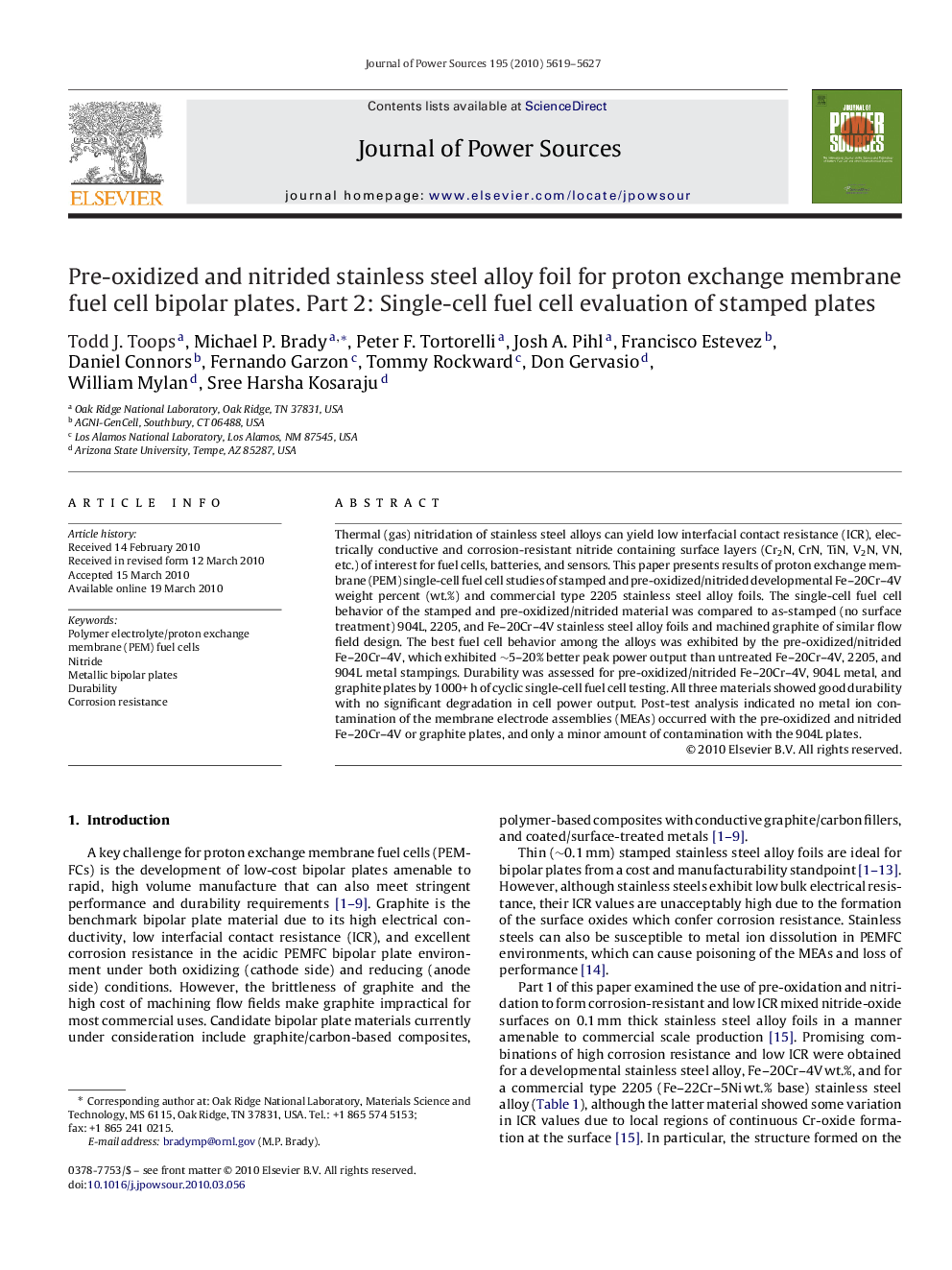| Article ID | Journal | Published Year | Pages | File Type |
|---|---|---|---|---|
| 1293727 | Journal of Power Sources | 2010 | 9 Pages |
Thermal (gas) nitridation of stainless steel alloys can yield low interfacial contact resistance (ICR), electrically conductive and corrosion-resistant nitride containing surface layers (Cr2N, CrN, TiN, V2N, VN, etc.) of interest for fuel cells, batteries, and sensors. This paper presents results of proton exchange membrane (PEM) single-cell fuel cell studies of stamped and pre-oxidized/nitrided developmental Fe–20Cr–4V weight percent (wt.%) and commercial type 2205 stainless steel alloy foils. The single-cell fuel cell behavior of the stamped and pre-oxidized/nitrided material was compared to as-stamped (no surface treatment) 904L, 2205, and Fe–20Cr–4V stainless steel alloy foils and machined graphite of similar flow field design. The best fuel cell behavior among the alloys was exhibited by the pre-oxidized/nitrided Fe–20Cr–4V, which exhibited ∼5–20% better peak power output than untreated Fe–20Cr–4V, 2205, and 904L metal stampings. Durability was assessed for pre-oxidized/nitrided Fe–20Cr–4V, 904L metal, and graphite plates by 1000+ h of cyclic single-cell fuel cell testing. All three materials showed good durability with no significant degradation in cell power output. Post-test analysis indicated no metal ion contamination of the membrane electrode assemblies (MEAs) occurred with the pre-oxidized and nitrided Fe–20Cr–4V or graphite plates, and only a minor amount of contamination with the 904L plates.
